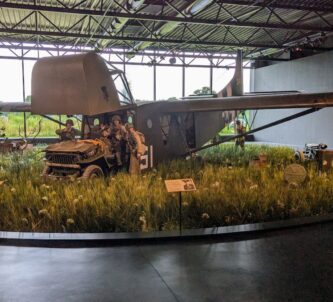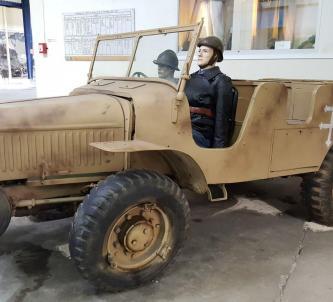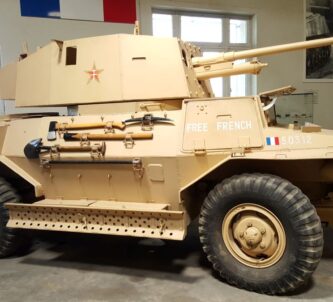Designed in 1943 by Austrian aeronautical engineer, Raoul Hafner, for the British Airborne Forces Experimental Establishment (AFEE), the Hafner Rotabuggy was a standard Willey’s Jeep converted into an autogyro*.
What is an autogyro?
Well, like a helicopter it has rotor blades, but unlike a helicopter they are not powered. The blades autorotate with forward motion, providing lift. An autogyro needs speed to take-off and to maintain flight. So an autogyro can’t take-off and land vertically, it needs a runway or large field. If the blades are already turning, that runway can be quite short. Think of ‘Little Nellie’ in the James Bond film ‘You only live twice’. Modern autogyros usually have an engine driving a pusher propellor at the back. The engine can also be used to spin up the rotor blades to near flying speed and then decoupled, so the aircraft can get airborne in a very short distance with pre-spun blades.
What was the problem that required a flying Jeep?
Airborne forces arrive with speed and surprise but once on the ground, without transport they are reducing to walking pace. The idea of flying in their own transport vehicles (yes, they were also thinking about flying tanks!) was an attractive one. Hafner had already been working on an autogyro alternative to parachutes (the Rotachute), which were thought to be more controllable than ordinary parachutes for precise landings needed by commandos and pathfinders. So, he was the right guy to start work on the Rotabuggy project.
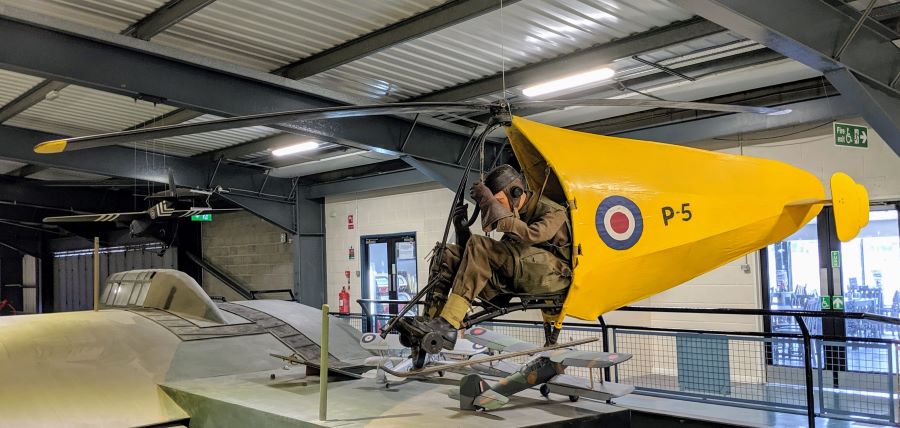
It wasn’t as straightforward as everyone hoped. Firstly, they had difficulty getting airborne. The truck they were using to tow it down the runway wasn’t fast enough. Eventually they resorted to a supercharged 4.5 litre Bentley sportscar. That got the Rotabuggy airborne for the first time in November 1943. They moved on to aero-towing using an Armstrong Whitworth Whitley bomber, and then releasing, gliding and landing.
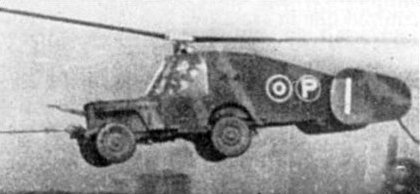
The problem was, the Rotabuggy was prone to heavy vibration and was difficult to control. It required two ‘pilots’. One to control it in the air and one to control it on the ground. Test pilots reported that it could be terrifying to fly and required intense concentration, leaving them exhausted after just a short flight. Its last 10-minute test flight came in the summer of 1944. After that the project was dropped. The US and British armies had moved on to vehicle-carrying gliders, which had already proved themselves on D-Day.
This Rotabuggy (and the Rotachute above) are replicas on display at the Army Flying Museum in Middle Wallop, Hampshire.
* Autogyros, gyrocopters and gyroplanes (often also spelt with an “i” replacing the “y”) are all the same thing. It just depends who you are talking to. Autogyro was the name used by its Spanish inventor, Juan de la Cierva, when he pioneered the concept in 1922. In the case of the Rotabuggy, it gets more complicated. The construction contract for the prototypes was given to R. Malcolm & Co, so the buggy was officially named the Malcolm Rotaplane.



